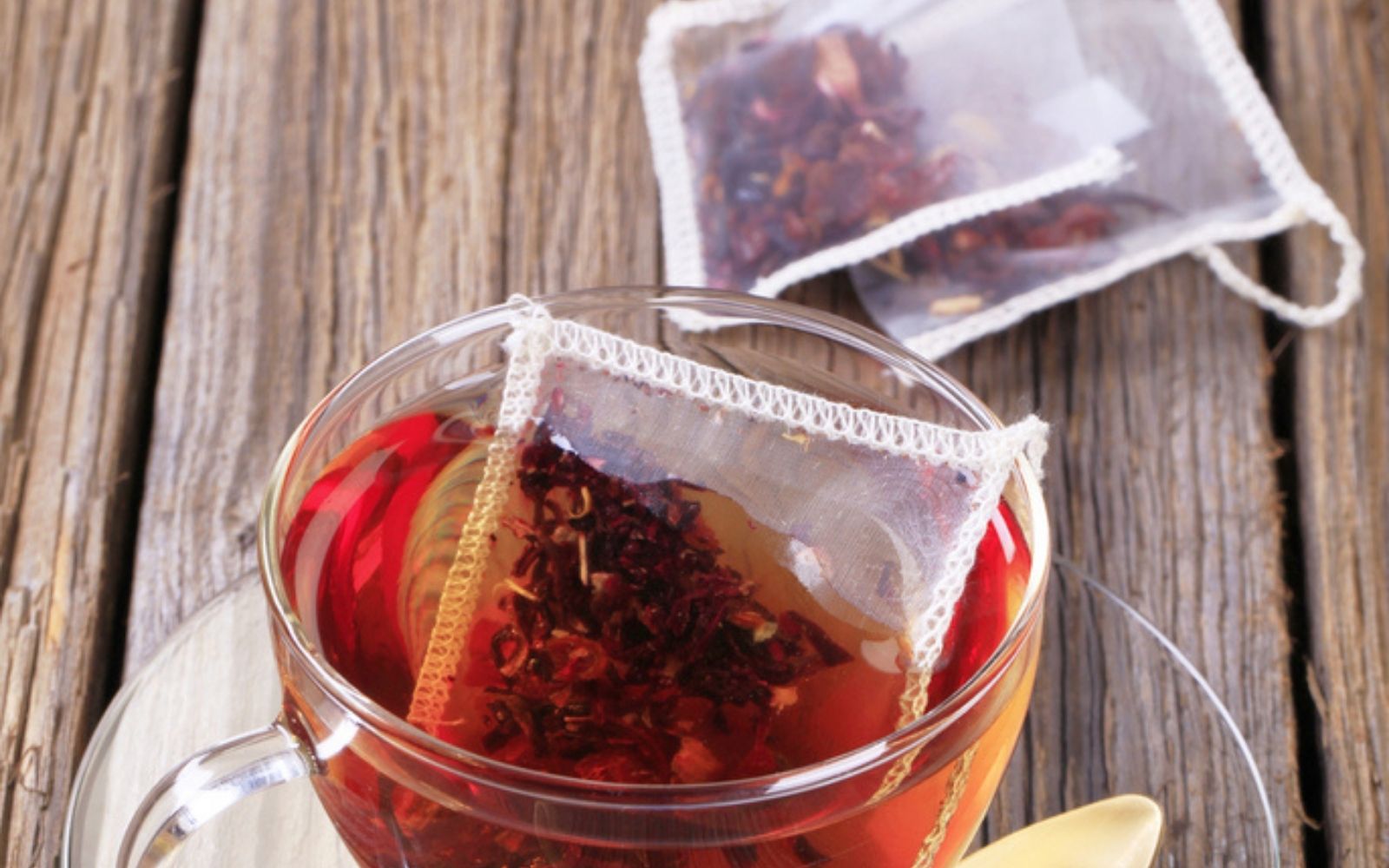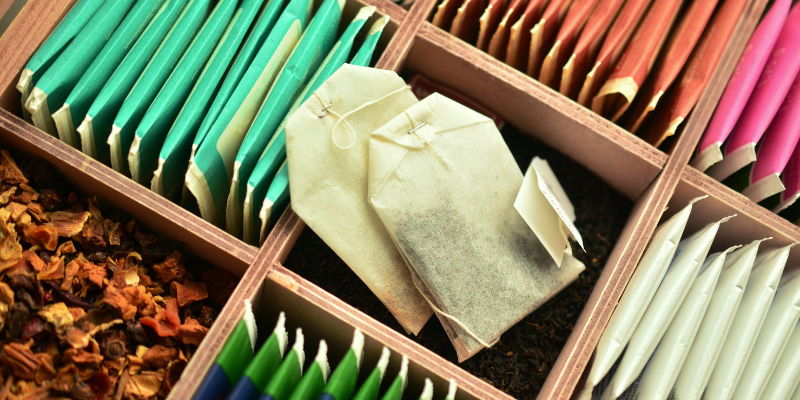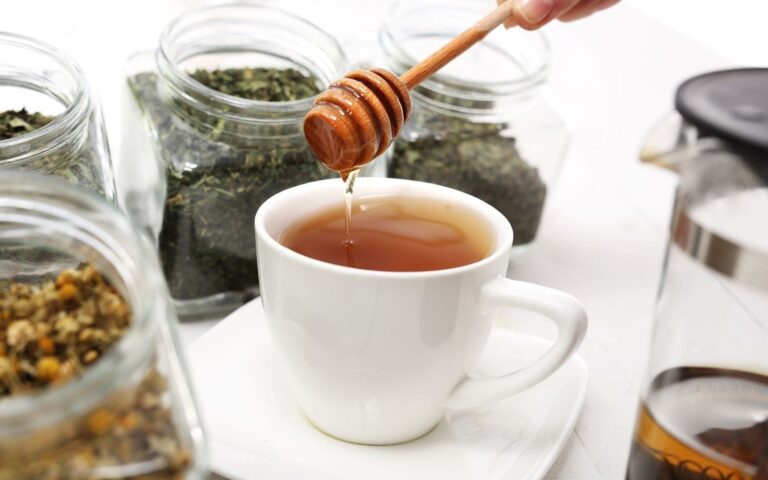Mixing Tea Bags | Best Practice

Disclosure: This post may contain affiliate links. If you click on a link we may make a small commission at no extra cost to you. You can read the full disclosure here
Mixing Tea Bags
Some tea connoisseurs may wrinkle their noses at the very idea of mixing tea bags but honestly, if it tastes good then why not! Surely all you’re really doing is modifying a tea blend to suit your palate. Combining teas together can create a whole host of different flavors and aromas. It can be fun to pick & mix and with so many tea varieties to choose from, you’ll never get bored as you try to figure out what new and inventive taste sensations work for you.
It It A Good Idea To Mix Tea Bags
There is no definitive answer to this question. Some people believe that mixing different types of tea bags produces a more flavorful cup of tea, while others believe that it diminishes the flavors. Ultimately, whether or not mixing tea bags is a good idea is up to the individual drinker’s preference.
But is there any downside to mixing tea bags, are there any negative connotations? What are the drawbacks and pitfalls if any? If you’re keen to experiment and want to become your own tea bag mixologist then let’s dive in and discover the best practice to follow.
Behind The Blend – The Taste Is In The Detail
Mixing tea flavors is not something new and anybody can give it a go. Listed below are some key points worth considering before you try to figure out what new tea fusions tickle your taste buds.
Water Quality
The quality of your water is important when you are trying to brew the most flavorsome cup of tea you can. You need good quality water to make a good cup of tea. If the water you drink is heavily treated, gives off any strong smells, or simply just doesn’t taste good, then neither will your tea blend.
It’s important to use fresh water each time you brew up (filtered if possible). Try not to use water that has previously been boiled or left sitting for hours in the kettle or pan.
Water Temperature
The temperature you choose for your tea blend has a significant impact on its taste and health-giving properties. Depending on the type of tea you are brewing, the water temperature plays an important role in extracting flavor and obtaining optimal health benefits.

Steep Time
Every tea is unique in its flavor profile and consistency and naturally, everyone has their own preference in tea flavor and intensity. If you steep some teas for too long it will result in strong, bitter almost acidic flavors. Conversely, too little brewing time and you will fail to extract all the good stuff and end up with a weak and insipid beverage lacking in antioxidant content.
Different tea types often require different brewing times at different temperatures. By choosing to blend tea bags with different brewing parameters, you create the problem of choosing the correct one. Initially, it is a good idea to follow the brewing guidelines for the most delicate tea in the mix you are creating. Alternatively, you can just mix teas that share their ideal temperatures and steeping times to avoid this problem.
Another option is to steep each tea bag separately following its own standard brewing guidelines and then blend together after steeping. The more you experiment with tea types, flavor profiles, temperatures, and steeping times the quicker you will develop a method that works for you.
Tea Quality
The lower the quality of tea you buy the more likely you are to yield a bitter-tasting brew and all tea bags are not created equally! This is something you may wish to consider before you begin mixing tea bags. They certainly offer ease of use and are definitely more convenient for the busy consumer. However, they don’t always contain the highest quality tea leaves.
Tea bags can be made of low-grade material, contain broken leaves and tea dust which can all see the flavor and health-giving properties of your brew suffer. Therefore, selecting a brand that packages their tea in natural and unbleached tea bags can be a good idea. This is because chemicals and plastics from bleached or synthetic tea bags can leech into your tea affecting flavor and tea quality.
Another option is the pyramid shape bag, it gives the leaves more room to expand helping to facilitate the full infusion of the tea’s complete flavor profile. You can even buy some tea bags that are made with whole leaves – giving you all the quality of loose tea but with the convenience of a bag.
Storage
Tea leaves will eventually deteriorate with age and go past their optimal quality. This doesn’t necessarily mean it’s unsafe to drink but storing tea correctly not only helps to maintain flavor and freshness, but it also helps to protect its wonderful aroma and antioxidant properties.
If you think you bought a high-quality tea bag yet your brew is poor, there is always a chance that the tea is just old or hasn’t been stored correctly. With so many different types and flavors available it’s easy to go overboard and end up buying way too many. Mixing tea bags can be a great way to use them up creating new tea blends with unique flavor profiles.
Which Tea Bags Mix Well Together

Teas that are from the same botanical family are more likely to mix well together than those that come from different families. For example, black teas and oolong teas are both from the Camellia sinensis plant, so they are likely to taste good when combined.
But when it comes to mixing teas, the real test is how it meets your own personal taste preferences. Here are a few examples of mixed tea bags I have tried and enjoyed:
Green Tea & Chamomile
Green tea and chamomile are both known to have calming effects. Chamomile is often used to help people relax and fall asleep, while green tea is thought to have general calming and stress-reducing effects. This blend definitely works for me and is a nighttime favorite.
Peppermint & Nettle
I find this mix of tea bags both uplifting and refreshing. The mix of peppermint and nettle is great for settling an upset stomach and makes a wonderful hot or iced tea. The peppermint is the dominant flavor and has an amazing smell.
Hibiscus And Ginger
This tea blend is full of antioxidants and vitamin c. Both ginger and hibiscus are known to possess anti-inflammatory effects, and this combination is said to be detoxifying and cleansing for the body. The flavor combination is quite sweet and tart, with a deep warming, and a spicy aftertaste. I personally love this one!
English Breakfast With Lemon
English Breakfast tea is a black tea blend that is typically made with Assam and Ceylon teas. The tea has a malty flavor and a slightly sweet taste. The addition of lemon makes the tea taste citrusy and tangy.
I’ll often enjoy this magical flavor combination on a sunny afternoon overlooking the English countryside.
Evaluating The Effects Of Mixing Tea Bags.
Tea blending is about achieving a good balance of flavor, aroma, and color. There is no right or wrong when it comes to personal taste and the possibilities are endless.
If you then add in the options of enjoying your tea blend either hot, cold, served as iced tea, or even brewed with milk, then mixing tea bags seems a great way to explore the full tea drinking experience. So let’s reflect on this innovative practice and see what else presents.
Exciting The Tastebuds
If your perfect cuppa isn’t already one of the tried and tested blends in existence, then mixing tea bags is a great opportunity for you to try combining different flavors together. Hopefully, you’ll find something new and exciting or at the very least, an improvement on an existing tea blend that you’ve previously shied away from.
Bonus Health Benefits
In moderation, herbal and true teas are known to have varied effects on the mind and body. So it follows that drinking a wide variety – depending on your health and emotional needs – could be a positive lifestyle choice.
By mixing tea bags you potentially experience more health benefits as you enjoy a more extensive range of tea types and flavors. However, remember to consider brewing times and temperatures as this can affect the overall antioxidant content as well as the taste of your brew.
Caffeine Content
Mixing tea bags can potentially lead to an increase in your caffeine intake depending on your tea blend. This natural stimulant is known to enhance mood, improve memory, decrease fatigue, improve mental and physical performance, and aid in muscle recovery. However, it can affect individuals differently, with some able to drink several cups of tea daily with no apparent side effects, and others being very sensitive to it and unable to consume even the smallest amount.
The caffeine content in your cup can be affected by the type of tea leaf used, the amount of tea, the brewing time, and the water temperature. It is obviously therefore important for tea drinkers to know just how much caffeine is in each individual tea bag if you are sensitive to its actions before blending.
Hydration Aid
Staying well-hydrated is a simple yet effective way to improve your health. As tea is one of the most popular beverages worldwide and contains numerous purported health benefits, it can be a great way to help you reach your daily fluid requirements.
As we have established, tea can be enjoyed warm, cold, over ice, or brewed with milk. Add to this the option of mixing tea bags and you create a very interesting and varied way to contribute to your daily fluid needs.
Many used to believe that tea was dehydrating, but that myth has been debunked as it has been shown that the slight diuretic effect does not counteract hydration.
Hunger Control
Tea is not only one of the healthiest drinks around, but it may help you stick to your nutritious food goals by satisfying that urge to snack and helping to ward off any unhealthy food craving. It appears to depend on the type of teas selected suiting the individual consuming it.
There are conflicting views as to whether tea can help people to forget their hunger pangs and this may have something to do with the factors that trigger the urge to grab a snack in the first place. However, if it works for you then mixing certain tea bags may provide added value to curbing those midday munchies.
A Mindful Practice
Drinking tea in itself is a peaceful and comforting practice. It can help the body and mind to calm down. Mindfulness is a method of focusing one’s attention on the present moment. By reminding yourself to notice the sensation of things and the world around you, the greater your ability to be fully present and not be overwhelmed by life.
Practicing mindfulness can help you to understand how your thoughts, emotions, and behaviors are related to each other and how they can affect your life. One way to practice mindfulness is through the tea ritual. As you bring your awareness to this everyday activity paying close attention and appreciating every detail, you will experience the present moment to the full.
Mixing tea bags that offer a calming relaxing and meditative effect can help you appreciate an even deeper mindfulness practice.
Conclusion
It takes time to master mixing tea bag blends to achieve the optimum taste and health benefits but the journey of discovery is half the fun. You’ll soon discover more interesting and complex flavors as you negotiate the varied brewing parameters and flavor profiles.
With some key research and taste testing, you will begin to fully understand, appreciate and develop your own natural ability for mixing tea bags.
FAQs
What Teas Are Good To Mix Together?
When it comes to tea, there are endless possibilities for blends. By mixing different types of tea together, you can create a beverage that is perfectly tailored to your own taste. Some of the most popular tea blends include black tea with peppermint, Earl Grey with lavender, and chamomile with lemon balm. These combinations can be enjoyed hot or cold, depending on the weather and your personal preference.
Is It Healthy To Mix Teas?
There is no one answer to this question as it depends on the teas being mixed and the health concerns of the person consuming the tea. Generally speaking, however, most teas are safe to mix provided that the ingredients in each tea are complementary (i.e. they do not clash or compete with each other for absorption). In addition, it is important to consider any health concerns that may be specific to the person drinking the tea.
Can You Drink Too Much Tea?
Tea contains caffeine, which is a stimulant and too much can potentially lead to adverse health effects. However, there is no definitive answer to this question as it depends on a person’s individual tolerance levels and overall health.






